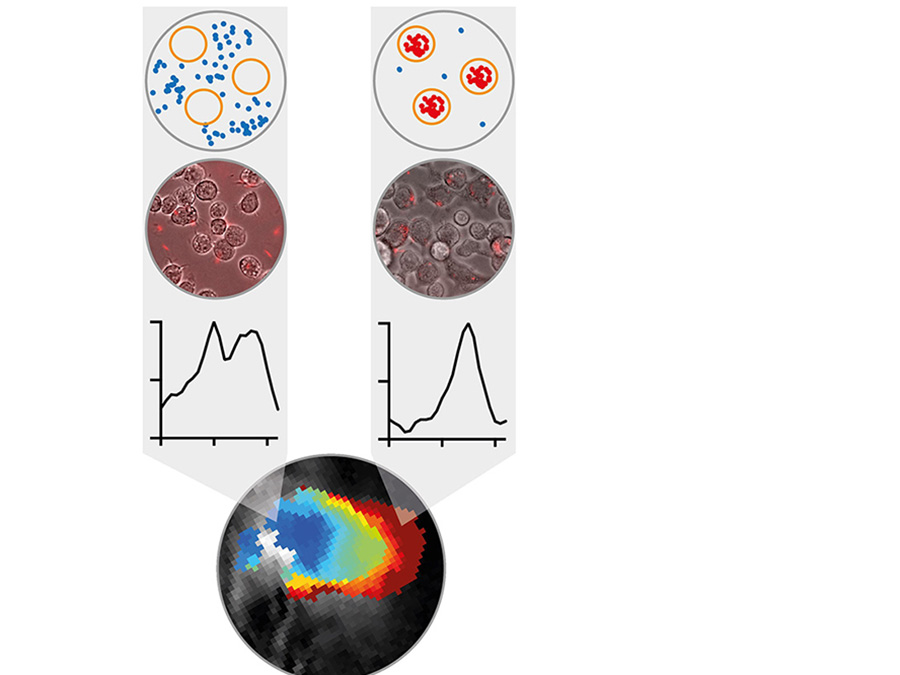Scientists use bacteria to characterize tumor regions
Purple bacteria visualize ‘big eaters’

Many cancers form solid tumors. Inside, such tumors reveal major differences at the cellular and molecular level. One of these concerns the localization and activity of macrophages (Greek for ‘big eaters’). They take up pathogens like viruses and bacteria and digest them inside. Although these cells are essential for a healthy immune system, they also play a key role in tumor development.
With the aid of bacteria the scientists have developed a new imaging method, which indicates where such macrophages are present and active. The Jülich Research Center and the Heinrich Heine University Düsseldorf were also involved in the study which was published in Nature Communications.
Harmless bacteria as tool for imaging technique
“We were able to demonstrate that purple bacteria of the genus Rhodobacter, which are harmless to humans, are suitable as indirect markers of macrophage presence and activity,” says Dr. Andre C. Stiel, scientists at the TUM Chair of Biological Imaging of Prof. Vasilis Ntziachristos and head of the Cell Engineering Group at the Institute of Biological and Medical Imaging at Helmholtz Zentrum München. Rhodobacter bacteria produce large quantities of the photosynthetic pigment bacteriochlorophyll a. This pigment enabled the researchers to detect bacteria in a tumor by means of multispectral optoacoustic tomography (MSOT).
During a MSOT scan, light is initially converted into sound, then into visual information. Initially, a weak, pulsating laser beam is directed towards the body. When the beam encounters molecules and cells, they heat up minimally and respond with minimal vibrations, which in turn generate acoustic signals. These are then picked up by sensors and converted into images. The way in which the individual cells and molecules react to the laser depends on their optical properties – in this case, for example, on the properties of bacterial pigments.
Macophages change surroundings of bacteria in the tumor
How does the principle of the tumor characterization work? Macrophages engulf bacteria as part of their natural scavenging activity, which is known as phagocytosis. This alters the surroundings of the bacteria, their absorption of electromagnetic radiation and, as a result, also the optoacoustic signal. Rhodobacter bacteria thus act like sensors for scientists, providing them with information about the presence and activity of macrophages.
In future, bacteria may be able to reveal the location of a tumor and also detect increased macrophage activity. Depending on their localization, the macrophages could provide information about unwelcome inflammations or the desired response to immunotherapies, and could ultimately be used to improve treatment strategies.
Publication:
Lena Peters et al. (2019): Phototrophic purple bacteria as optoacoustic in vivo reporters of macrophage activity. Nature Communications, DOI: 10.1038/s41467-019-09081-5
Contact:
Dr. Andre C. Stiel
Scientist at Chair of Biological Imaging (Prof. Vasilis Ntziachristos)
Technical University of Munich
Tel. +49 89 3187 3972
andre.stiel@helmholtz-muenchen.de
Technical University of Munich
Corporate Communications Center
- Dr. Vera Siegler
- vera.siegler@tum.de
- presse@tum.de
- Teamwebsite